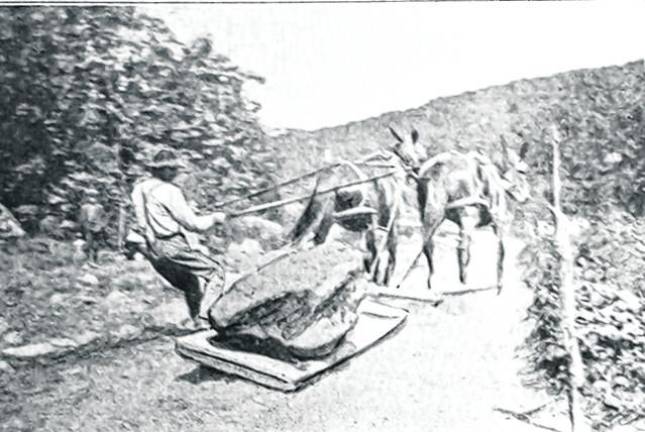

A few weeks ago, I told of a hiking trail I’ve known my whole life that is out of the way and little used. It used to be the Paterson-Hamburg Turnpike, which during much of the 1800s was the premier way to travel from the city to points west.
I was surprised that my column turned out to be pretty popular, with a lot of reader feedback.
Having won our independence with the Revolutionary War, our nation looked westward to the lands that were still mostly wilderness. Many people looking for new horizons traveled to the west, as did great numbers of immigrants who arrived in the New York City harbor.
Understanding this, the New Jersey Legislature passed laws to help travel occur. In 1806, a charter was obtained from the State of New Jersey so a private toll road could be built. This would run from Broadway in the city of Newark out to Paterson, then to Hamburg.
Looking for a direct route, public roads in much of Morris County that have served since colonial days were used. To continue the direct route, new pathways were built. In cooperation with landowners, these roads were to go through private lands and be maintained by private individuals. These people could collect a toll in compensation.
This combination worked well for at least 70 years. Produce and iron were transported to the east and goods could be brought to our area from the city. Stagecoach travel thrived.
On July 14, 1825, Lafayette, a French aristocrat who fought under Gen. George Washington in the Revolutionary War, used the road to come out our way.
From near the Passaic County border with Sussex County to our town of Hamburg, much activity took place during the earlier years of our nation. Hardly anyone knows of the robust industry that took place where not much seems to be present today. But there are signs of it.
Pulling off at Canistear Road, you can see the large stone dam that served the Skinner knife factory from the turn of the 20th century. Water turbines drove belts and pulleys that were used to make knives.
A walk along Old Route 23 would reveal the old Stockholm Forge, where the waterwheel remains at this iron forge.
The abutment at the Pequannock River near Route 515 shows where the now dead-ended Old Route 23 crossed. Just north of this is where the old turnpike traversed the river, close by the Methodist cemetery and the church from the 1820s.
Further west, the old turnpike road goes up into the woods near the “straightaway” of Route 515, then past Deer Trail Lakes.
At this point, it is the Silver Lake area. While there is not much to see here except wonderful nature, there was a bustling Silver Lake YMCA Scouts camp at one point.
Further along, where I walked and described in the earlier column, there was a toll booth and a rest area known as Hamilton Heights. There were toll booths in Upper Hamburg and one two miles north. That old bridge can be seen near Scenic Lakes Road and Route 23.
The turnpike road served our county and our nation well for some 100 years before railroads came into vogue, then automobiles to take their place for human transportation.
Bill Truran, Sussex County’s historian, may be reached at billt1425@gmail.com